Vigna radiata, commonly known as the moong bean, green gram, or mung bean, is a vital leguminous plant in the Fabaceae family. Originating in India, it has become a staple in various Asian cuisines and is cultivated worldwide. Revered for its rich nutritional content, Vigna radiata provides protein, vitamins, and minerals. Beyond its dietary benefits, its adaptability to diverse soil types and resilience to pests make it a preferred crop for farmers. Additionally, as a legume, it plays a crucial role in improving soil fertility by fixing atmospheric nitrogen, showcasing its ecological significance in sustainable agriculture.
Table of Content
Health benefits of moong beans
- Improves male reproductive health
- Helps in Weight management
- Good for pre diabetics
- Relieves Constipation.
- Best diet for PCOS
- Good for Hair health
- Keeps Skin healthy and young
- Best protein diet for IBS
How to incorporate moong beans in diet
Green Gram Plant Structure
The Moong bean, botanically known as Vigna radiata, is an annual leguminous plant belonging to the family Fabaceae. Widely cultivated for its edible seeds, this plant exhibits a bushy growth form and can grow up to 30-120 cm in height.
Roots:
Being a legume, the moong bean plant possesses a taproot system that grows deep into the soil. The roots form symbiotic relationships with Rhizobium bacteria, which help in fixing atmospheric nitrogen, thus enriching the soil.
Stems:
The stem is slender, branched, and slightly hairy. It is erect or semi-erect, enabling the plant to be bushy.
Leaves:
Moong bean leaves are trifoliate, meaning each leaf is divided into three leaflets. These leaflets are ovate to rhomboid in shape and can be 5-15 cm long. They have a bright green color and are slightly hairy underneath.
Flowers:
The flowers are small, yellow, and borne in clusters of 10-20. They give way to the pods once pollinated.
Fruits (Pods):
The pods are cylindrical, 5-10 cm long, and contain 10-15 seeds. Initially green, they turn yellow or brown as they mature.
Seeds:
The seeds, commonly known as moong beans, are small, oval-shaped, and green or yellow in color. They are consumed in various forms across many cultures and are renowned for their nutritional value.
Moong Bean In Ayurveda
In Ayurveda, the ancient Indian system of medicine, every herb or food substance is evaluated based on its intrinsic qualities that determine its therapeutic effect on the body. Here are the Ayurvedic properties of moong bean (Vigna radiata):
Ayurvedic properties of moong
Texts of ayurveda explain the properties of mungbean as follows
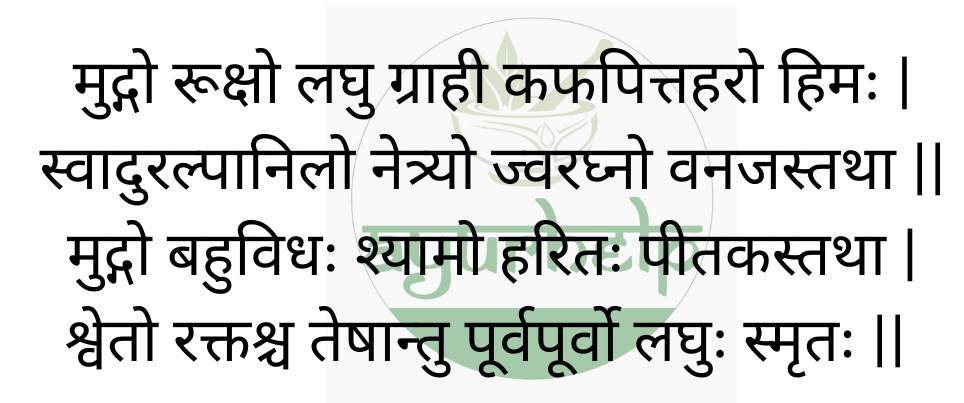
1. Rasa (Taste): Moong beans are considered to have a “Shadava” or six-fold taste, but they are predominantly Madhura (Sweet) and sometimes Tikta (Bitter).
2. Guna (Qualities): Moong beans are described as Laghu (light to digest) and Ruksha (dry).
3. Veerya (Potency): Moong beans have a Shita Veerya, which means they have a cooling potency. This makes them beneficial in balancing Pitta and reducing heat-related issues in the body.
4. Vipaka (Post-digestive effect): After digestion, moong beans have a Madhura Vipaka, which means they have a sweet post-digestive effect. This underlines their nourishing and tonifying properties.
It is praised as “grahi” which means it is useful in IBS, good for the eyes, and the best diet for fever.
Effect on Doshas:
Effect of these beans on tridosha are as follows.Moong beans are particularly beneficial for balancing the Pitta dosha due to their cooling potency. They also help in reducing Kapha dosha owing to their dry and light qualities. However, if consumed in excess, they might increase Vata due to their Ruksha (dry) quality.
In essence, moong beans are valued in Ayurveda for their easy digestibility, nourishing properties, and their ability to balance certain doshas, making them a staple in many Ayurvedic diets and detox regimens.
Health Benefits of moong Bean or Mung or green gram
Mung beans, a staple in various global cuisines, especially in Asia, have long been prized for their remarkable nutritional and therapeutic value. These small, green legumes are packed with essential vitamins, minerals, fiber, and protein, making them a comprehensive source of nutrition. Rich in antioxidants, they play a vital role in neutralizing harmful free radicals, thereby preventing chronic diseases and promoting overall well-being. Their high fiber content aids in digestion, supports regular bowel movements, and may assist in managing cholesterol levels. Being a good source of plant-based protein, they are especially beneficial for vegetarians and vegans looking for non-animal protein sources. Furthermore, they support heart health by maintaining blood pressure and reducing the risk of cardiovascular ailments. Their low glycemic index makes them an excellent food choice for diabetics, as they help regulate blood sugar levels. Hence it is recommended in diet in ayurvedic treatment for diabetes. Additionally, these beans contain phytonutrients and anti-inflammatory properties, which can be instrumental in boosting immunity and combatting inflammation in the body. As part of a balanced diet, their inclusion can be a cornerstone for those seeking a holistic approach to health, offering myriad benefits in one compact package.
Improves male reproductive health
Moong beans (often referred to as green gram or mung beans) have long been utilized in traditional medicine systems, including Ayurveda, for promoting overall health. Some of the health benefits of moong beans can be related to enhancing male sexual health. Usually ayurveda practitioners recommend this bean in diet for men who are undergoing vajikarana therapy. Here are some of the ways in which moong beans might be beneficial:
1. Rich in Zinc: Moong beans are a good source of zinc, an essential mineral known for its role in testosterone production and sperm health. Adequate zinc levels are crucial for male fertility, sperm motility, and overall sexual health. Hence this is recommended in diet during Ayurvedic treatment for male infertility.
2. Amino Acids: These beans are packed with essential amino acids, which are the building blocks of proteins. Amino acids like arginine can improve blood circulation, potentially enhancing erections by allowing more blood flow to the genital region. This acts as a diet and ayurvedic medicine for ED and PE.
3. Antioxidant Properties: Oxidative stress can negatively impact sperm quality and overall sexual health. Moong beans are rich in antioxidants, which can combat free radicals and protect against oxidative damage, preserving the integrity and function of sperm cells.
4. Rich in Vitamins: Moong beans are a source of various B-vitamins, which play an essential role in energy production. Adequate energy levels are crucial for stamina and overall sexual performance.
5. Supports Blood Flow: The magnesium and potassium found in moong beans can support healthy blood pressure levels. Good blood flow is essential for maintaining erections and promoting overall sexual function.
6. Stress Reduction: Chronic stress can negatively impact testosterone levels and overall sexual drive. The nutrients in moong beans, including magnesium and B-vitamins, can help in managing and reducing stress, indirectly promoting better sexual health.
7. Digestive Health: A healthy gut can have indirect effects on hormone regulation and overall well-being. The dietary fiber in moong beans supports digestion, ensuring better absorption of nutrients that can aid in sexual health.
While moong beans can be a nutritious addition to one’s diet, it’s essential to remember that sexual health is multifaceted and influenced by various factors, including physical, psychological, and hormonal components. A holistic approach, considering overall health, diet, exercise, mental well-being, and medical consultations, is crucial for optimal sexual health.
Helps in weight management
Mung beans are a valuable addition to any weight loss regimen due to their unique combination of nutrients and properties. First and foremost, they are low in calories while being densely packed with essential vitamins, minerals, and protein. This makes them a filling option that provides a substantial amount of nutrition without a hefty calorie count.
Their high fiber content is another significant advantage for those aiming to shed pounds. Dietary fiber is known to promote feelings of fullness, which can prevent overeating and snacking on high-calorie, low-nutrition foods. The fiber in these legumes slows digestion, ensuring a steady release of energy and preventing sudden spikes and crashes in blood sugar levels. Stable blood sugar helps in reducing cravings, particularly for sugary foods, which can often be a downfall in many diets. Ayurveda acharyas recommend this bean in diet during ayurvedic weight loss treatment for obesity.
The protein content in these beans aids weight loss in multiple ways. Protein boosts metabolic rate, allowing the body to burn calories more efficiently. Moreover, it helps in building and preserving muscle mass, especially when combined with resistance training. A higher muscle mass equates to a faster metabolism, further promoting calorie burn and weight loss.
In addition to these direct benefits, mung beans also support digestive health. They can foster a healthy gut microbiome, which recent research suggests plays a pivotal role in weight management. A balanced gut can improve nutrient absorption, reduce inflammation, and even impact hunger-regulating hormones.
Furthermore, these legumes have a low glycemic index, meaning they cause a gradual rise in blood sugar when consumed. Foods with a lower glycemic index can be beneficial for weight management as they provide sustained energy, keeping one satiated for longer.
Good for pre-diabetics
Prediabetes, a health condition characterized by blood sugar levels that are higher than normal but not yet in the range of diabetes, often serves as a crucial wake-up call. Dietary intervention becomes essential at this stage to prevent the progression to full-blown diabetes. In this context, the inclusion of certain foods can be a game-changer, and the mung bean is one such food that stands out for several reasons.
Firstly, this legume has a low glycemic index (GI), which means its carbohydrates are broken down and absorbed gradually, leading to a slower and more stable rise in blood sugar levels. Foods with a low GI are particularly beneficial for individuals with prediabetes, as they aid in regulating glucose in the bloodstream.
Furthermore, they are a rich source of dietary fiber, particularly soluble fiber. This type of fiber slows the absorption of sugar, thereby assisting in stabilizing blood glucose levels. Soluble fiber also aids in improving insulin sensitivity, a crucial factor for prediabetics.
Additionally, these beans are packed with essential nutrients like magnesium and potassium. Magnesium plays a role in the body’s insulin response. A deficiency in magnesium can impair insulin’s ability to keep blood sugar levels in check. By ensuring an adequate intake of magnesium through foods, one can potentially optimize their body’s insulin function.
On top of these benefits, they provide an excellent source of plant-based protein. A diet high in protein, especially from plant sources, can enhance satiety, reduce food intake, and help in weight management. Considering that obesity is a significant risk factor for diabetes, maintaining a healthy weight can be pivotal for someone with prediabetes.
In conclusion, for individuals on the brink of diabetes, dietary choices can make a significant difference. By incorporating nutrient-dense, low GI foods that support insulin function and blood sugar regulation, one can take proactive steps towards safeguarding their health, and this legume offers a promising solution in this endeavor.
Relieves Constipation.
Mung beans are hailed for their numerous health benefits, one of which is their ability to combat constipation. The small green legumes are densely packed with dietary fiber, a key component that assists in promoting regular bowel movements. Here’s a closer look at how they work wonders in relieving constipation:
1. High Fiber Content: Dietary fiber can add bulk and moisture to stools, making them easier to pass. Consuming foods rich in fiber, like this legume, ensures a softer stool consistency, preventing the hard and dry stools often associated with constipation.
2. Gut Health Promotion: The beans contain a substantial amount of soluble fiber, which acts as a prebiotic. Prebiotics are substances that induce the growth or activity of beneficial microorganisms in the digestive tract. By fostering a healthy gut environment, they facilitate smoother digestion and efficient waste elimination.
3. Promotion of Bowel Movements: Regular bowel movements are essential for preventing constipation. Consuming these legumes can stimulate the bowel movement due to the peristaltic action induced by the dietary fiber, ensuring timely elimination of waste.
4. Balanced Fluid Levels: The beans are also rich in potassium, an essential mineral that helps in maintaining fluid balance in the body. Adequate fluid in the intestines aids in softening the stool, thus easing its passage.
5. Detoxifying Properties: Regular consumption can help detoxify the digestive system. A clean digestive tract ensures better absorption of nutrients and smoother elimination of waste, reducing the chances of constipation. It is good for fatty liver.
6. Nutrient Absorption: The presence of essential vitamins and minerals in the beans ensures the healthy functioning of the digestive system. A well-functioning digestive system can process foods more efficiently, ensuring waste products move smoothly through the colon.
Best diet for PCOS
Polycystic Ovary Syndrome (PCOS) is a common endocrine disorder affecting many women in their reproductive age. It often manifests as irregular menstrual cycles, hormonal imbalances, and metabolic issues. Adopting a balanced diet plays a crucial role in managing PCOS symptoms, and this is where the mung bean becomes particularly noteworthy. This bean acts as the best ayurvedic diet for PCOS or PCOD
Rich in protein, these beans provide an excellent plant-based alternative for those aiming to reduce their intake of animal products. A diet high in protein can promote feelings of fullness, assist in weight management, and support muscle growth, all of which are beneficial for PCOS management.
Furthermore, they have a low glycemic index. Consuming foods with a low glycemic index can stabilize blood sugar levels, a vital aspect for those with PCOS who may have insulin resistance. Stabilized blood sugar can also curb excessive hunger and prevent overeating, thereby aiding weight loss, a recommended strategy for managing PCOS. Adding this legume to your diet while you are on ayurvedic treatment for PCOS or PCOD, helps in a great way to achieve goals.
These legumes are also packed with essential nutrients like magnesium, potassium, and folate. Magnesium, in particular, aids in regulating insulin and blood sugar levels. The fiber content helps improve digestive health and ensures regular bowel movements, mitigating the risk of digestive issues that may exacerbate PCOS symptoms.
In addition to their nutrient content, these beans have anti-inflammatory properties. Chronic inflammation is often observed in women with PCOS, and tackling this inflammation can alleviate some of the associated symptoms. By incorporating foods with anti-inflammatory properties into the diet, one can create a supportive environment for the body to heal and function optimally.
In conclusion, with their impressive nutrient profile, anti-inflammatory properties, and ability to regulate blood sugar, mung beans can indeed be considered a potent dietary ally for women with PCOS.
Good for hair health
Mung beans have been a dietary staple in various cultures for centuries, not only for their culinary versatility but also for their numerous health benefits. Beyond their known advantages for overall physical well-being, they also have a significant role in promoting hair health.
First and foremost, these beans are packed with essential nutrients, particularly protein. Hair is primarily made of a protein called keratin, and a protein-rich diet can support hair growth and strengthen hair strands. By ensuring an adequate protein intake, one can potentially reduce hair breakage and thinning.
Additionally, mung beans are a rich source of antioxidants, including vitamin E. Antioxidants help combat oxidative stress, which can otherwise damage hair follicles and contribute to hair loss. Vitamin E, in particular, enhances scalp circulation, ensuring hair follicles receive the necessary nutrients to grow strong and healthy.
The iron content in these beans also plays a pivotal role in hair health. Iron promotes the efficient delivery of oxygen to the body’s cells, including hair follicles. An iron deficiency can lead to hair loss, making it vital for individuals, especially those showing signs of hair thinning, to ensure they are consuming iron-rich foods.
The presence of biotin in mung beans further adds to their hair benefits. Biotin, often dubbed as the ‘hair growth vitamin’, is known to improve hair’s overall health by providing thickness, enhancing shine, and reducing split ends.
Another crucial mineral present in ample amounts in mung beans is zinc. Zinc plays a vital role in hair tissue growth and repair. It also helps in keeping the oil glands around the hair follicles working correctly. A deficiency in zinc can potentially lead to hair loss.
Incorporating mung beans into one’s diet can, therefore, offer a holistic approach to hair care. By addressing potential nutrient deficiencies and providing a rich array of vitamins and minerals, these beans offer a natural solution to maintaining lustrous and resilient hair.
Keeps Skin healthy and Young
Mung beans are not just limited to their culinary versatility; their benefits extend to skincare as well. When incorporated into one’s diet or used as a skincare ingredient, they play a pivotal role in maintaining youthful and healthy skin.
One of the primary ways these legumes contribute to skin health is through their rich antioxidant content. Antioxidants fight against free radicals, which are unstable molecules that can damage the skin and accelerate the aging process. By neutralizing these free radicals, the antioxidants in mung beans can help reduce the appearance of fine lines, wrinkles, and age spots, ensuring a radiant and youthful complexion.
In addition, these beans are a good source of copper, an essential mineral that plays a significant role in the production of collagen and elastin. Collagen gives the skin its firmness, while elastin provides elasticity. By promoting collagen and elastin production, they help maintain the skin’s structure, preventing sagging and promoting suppleness.
Furthermore, the protein content of these beans supports tissue repair and regeneration. Since skin cells are constantly being shed and replaced, adequate protein intake ensures the rapid regeneration of new cells, aiding in faster wound healing and the maintenance of smooth skin.
Mung beans are also rich in essential fatty acids which hydrate the skin, ensuring it remains moisturized. Hydrated skin not only appears plump and glowing but also has a reduced tendency to develop early signs of aging, such as wrinkles and fine lines.
The vitamin B complex found in these legumes is another noteworthy component for skin health. These vitamins are involved in improving circulation, ensuring that nutrients reach skin cells efficiently. Enhanced circulation also aids in detoxification, leading to clearer skin free from breakouts and blemishes.
Incorporating mung beans into one’s diet or skincare routine can, therefore, offer a holistic approach to skin health. Through their multifaceted benefits, they act as nature’s elixir for maintaining a youthful and vibrant complexion.
Best protein diet for IBS
Irritable Bowel Syndrome (IBS) is a chronic gastrointestinal disorder characterized by abdominal pain, bloating, and irregular bowel habits. One of the primary therapeutic strategies for managing IBS symptoms involves dietary modifications. Within this context, mung beans emerge as a potentially beneficial inclusion in the diet of IBS sufferers.
This bean is praised as “grahi” in texts of ayurveda. This means it helps to control the frequent unhealthy movement of large intestine and prevent frequent bowel movement. This makes it very ideal diet for IBS patients.
These legumes are a rich source of plant-based protein. Proteins are essential macronutrients required for the repair and regeneration of body tissues, and for individuals with IBS, a plant-based protein might be easier to digest compared to some animal-based proteins, which could be triggering for certain individuals.
One reason why they stand out as a protein source for IBS sufferers is their relative ease of digestibility. Compared to other legumes, they tend to cause less gas and bloating, symptoms often aggravated in IBS patients. Their natural composition means they are less likely to ferment in the gut, which can cause uncomfortable symptoms for those with IBS.
Moreover, they are low in FODMAPs (Fermentable Oligosaccharides, Disaccharides, Monosaccharides, and Polyols), which are short-chain carbohydrates that can be poorly absorbed in the intestine and can exacerbate IBS symptoms. A low FODMAP diet is often recommended for those with IBS to alleviate symptoms, making these beans a suitable choice.
Furthermore, they contain a significant amount of soluble fiber, which can aid in normalizing bowel movements. Soluble fiber dissolves in water and forms a gel-like substance, which can help both constipation and diarrhea, common issues in IBS patients.
However, it’s crucial to introduce them into the diet gradually, especially for those with compromised gut health. Starting with small portions and observing how the body reacts will ensure that they are a good fit. As always, consulting with a healthcare or nutrition professional before making any significant dietary changes, especially for conditions like IBS, is imperative.
How to incorporate moong beans into the diet
Incorporating mung beans into one’s diet can be both a nutritious and delicious endeavor. These versatile legumes can be seamlessly added to various dishes, amplifying their health benefits without compromising taste.
Starting with breakfast, one can create a nourishing porridge using sprouted beans, mixed with rice or millets, and flavored with spices like turmeric, cumin, and ginger. The sprouting process enhances the nutrient content, making them easier to digest and increasing their antioxidant levels.
For lunch or dinner, they can be used to prepare wholesome soups. Simply boil them with vegetables of your choice, seasoned with herbs and spices, and blend to get a creamy texture. This not only provides a hearty meal but also ensures a good mix of protein and essential nutrients.
Salads present another delightful opportunity. Boiled or sprouted beans can be tossed with a medley of vegetables, garnished with herbs, drizzled with olive oil, and seasoned for a refreshing side dish. Their mild taste pairs well with robust flavors like lemon, garlic, or even tangy vinaigrettes.
In many Asian cultures, they are ground into a paste and used as a filling for sweet treats like mooncakes or pancakes. This showcases their adaptability, as they can swing between savory and sweet dishes with ease.
One cannot overlook the classic curry or stew, where they can be the primary ingredient, simmered with tomatoes, onions, and a blend of spices until tender. Served alongside rice or flatbreads, it makes for a fulfilling meal.
For those who enjoy fermented foods, beans can be fermented to prepare traditional dishes, enhancing their digestibility and introducing beneficial probiotics to the diet.
In conclusion, the adaptability of mung beans in the culinary world is vast. Whether you’re aiming for a quick snack, a hearty meal, or a sweet treat, they can be the nutritional powerhouse that complements and elevates your dish.
Click for Ayurvedic Consultation
Call us at +91 9945995660 / +91 9448433911
WhatsApp + 91 6360108663/
Reference:
https://pubmed.ncbi.nlm.nih.gov/29777704/
https://www.ncbi.nlm.nih.gov/pmc/articles/PMC8988681/ https://pubmed.ncbi.nlm.nih.gov/31484315

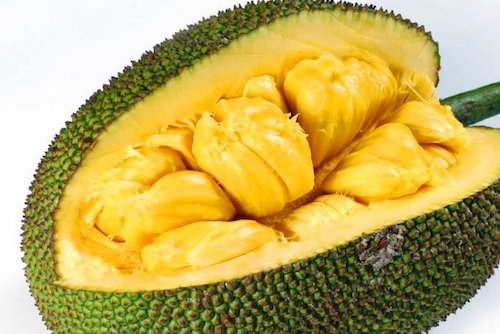
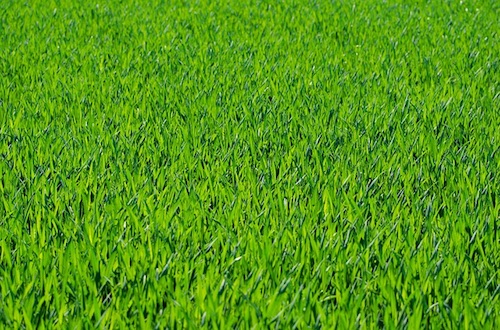
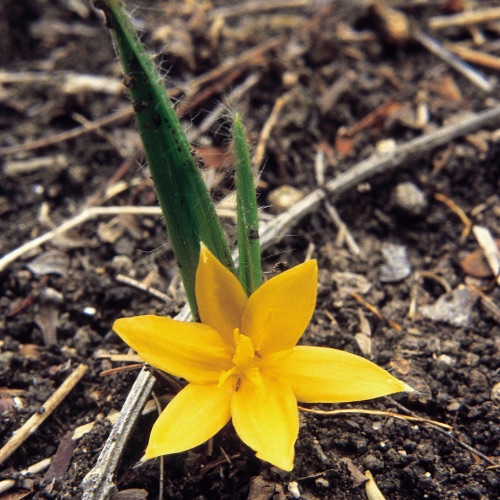
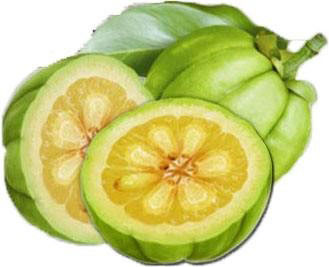
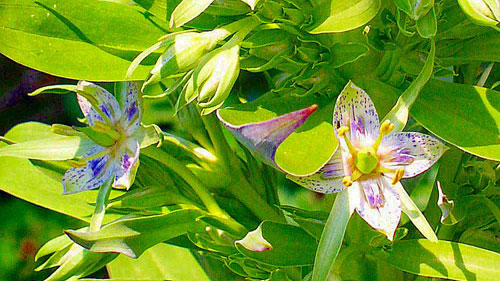
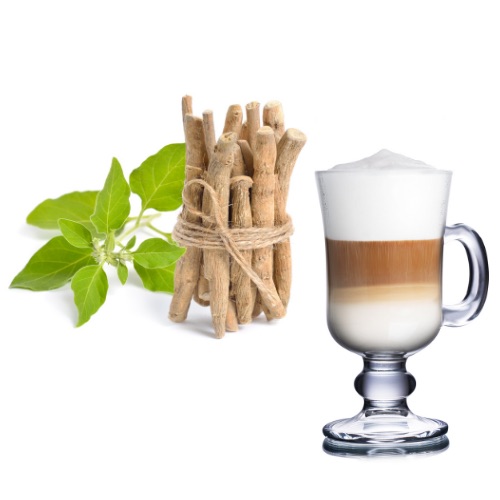
Pingback: Ayurveda or Ayurvedic Diet Plan For PCOS
Pingback: Ayurveda Care During Monsoon Season - Varsha Rutucharya
Pingback: Ayurveda Regimen for Winter Depression
Pingback: Ayurveda Health Benefits of Curd / Dahi /Yogurt
Pingback: Ayurveda Health Benefits and Uses of Milk - Dos and Don'ts
Pingback: Gout and Uric Acid Ayurvedic Home Remedies and Diet
Pingback: Ayurveda Vata Dosha - Body Type and Balancing Tips
Pingback: Ayurveda Health Benefits and Uses of Onion
Pingback: Brimhana Therapy an Ayurveda Way to Gain Weight